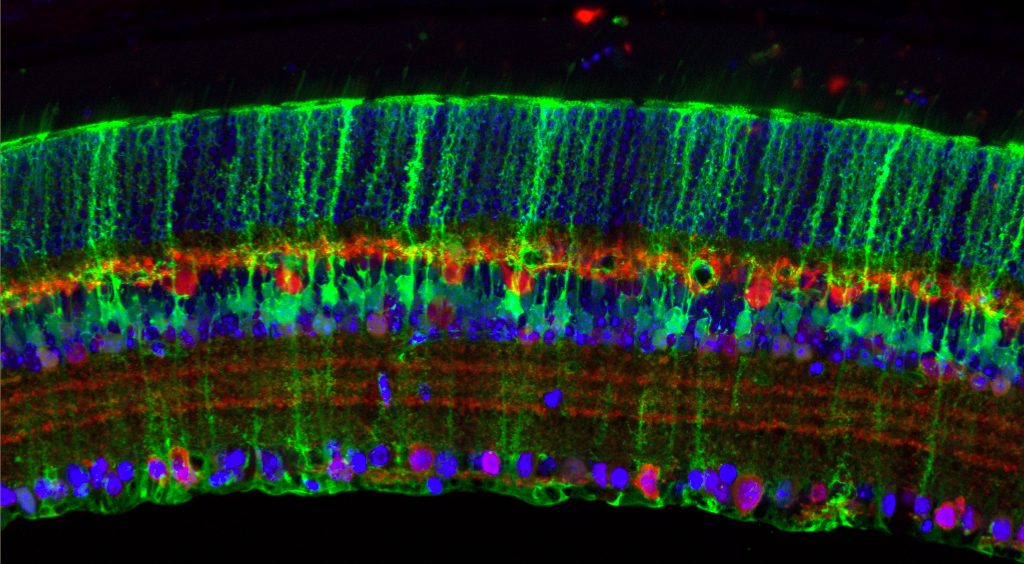The Flannery Lab

Retinal Degeneration
Over 100,000 Americans of all ages suffer from inherited retinal diseases, which cause a progressive loss of vision. In most IRDs, disease begins in the rods, causing vision loss from the periphery to the center, leaving patients unable to navigate their surroundings. Retinal degeneration and blindness result from the loss of rod and cone photoreceptors due to mutations in these cells or in their closely interacting and supportive retinal pigment epithelium, from environmental or poorly defined age-related factors, or the actions of other retinal neurons, glia or vascular elements. Relatively little is known about why precisely why photoreceptors die in any of the many retinal degenerations, and very little effective therapy exists for most of these diseases. One of the major goals of our laboratory is to develop therapeutic approaches that will restore vision in retinal degenerations.
Adeno-Associated Viral Gene Therapy
Gene therapy has vast potential for treating and potentially curing a number of retinal diseases, including inherited retinal degenerative diseases, glaucoma, and age-related macular degeneration. However, gene delivery technologies require significant improvements in cellular targeting, efficiency, and safety before promising findings in animal studies are translated to the clinic. The lab uses mouse models of inherited retinal degenerations to optimize transduction and gene delivery of specific retinal cell types.
Optogenetic Vision Restoration
Can the inner retina be manipulated in a way to add a light-receptive function, and thereby serve to transduce light in retinas that have lost their photoreceptors due to various retinal degenerations? In collaboration, we use microbial channelrhodopsins to target the surviving inner retina, restoring vision in mouse models of inherited retinal degenerations. This compensates for their loss of input from photoreceptors, restoring light responsiveness to the retina and sending information to the brain to restore vision. This approach is independent of the mutations that result in photoreceptor degeneration. Exceptions to this approach may be diseases that cause RPE cell death, such as choroideremia. We employ sophisticated behavioral analysis to test not only the restoration of the ability to tell light from dark or flashing from steady light, but the overall visual quality of the animal. Success of this program represents a major step in the development of optogenetic therapies.
